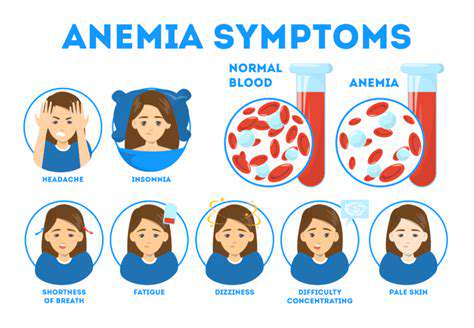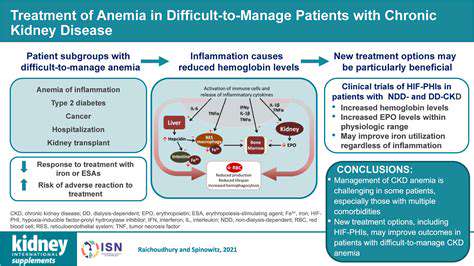Understanding Anemia and Its Connection to Anxiety Symptoms
The Hidden Impact of Low Oxygen Delivery
Anemia isn't simply about feeling tired - it's your body's distress signal that vital organs aren't getting enough oxygen. This oxygen deprivation creates a domino effect throughout your entire system, forcing your heart to pump harder while leaving your brain and muscles struggling to function optimally.
What's Really Happening Inside Your Body
Healthy red blood cells act like microscopic delivery trucks, transporting oxygen from your lungs to every cell in your body. When these cells are in short supply or don't contain enough hemoglobin (the oxygen-carrying protein), your tissues begin starving for oxygen. This explains why simple activities suddenly feel exhausting - your muscles are literally running on empty.
Common Triggers You Might Overlook
While iron deficiency gets most of the attention, anemia has multiple potential culprits:
- Chronic blood loss (even small amounts over time)
- Digestive disorders affecting nutrient absorption
- Certain medications that interfere with blood cell production
- Pregnancy-related increased blood volume demands
Recognizing the Warning Signs
Anemia's symptoms often creep up gradually, making them easy to dismiss as normal tiredness. Pay special attention if you notice:
- Unusual shortness of breath during routine activities
- Persistent coldness in your hands and feet
- Brittle nails or hair loss
- Cravings for ice or non-food items (a condition called pica)
When to Seek Medical Advice
Don't ignore symptoms that persist for more than two weeks, especially if they're worsening. Simple blood tests can confirm whether anemia exists and help identify the underlying cause. Early intervention prevents more serious complications down the road.
Nutritional Solutions That Make a Difference
While supplements have their place, food should be your first line of defense against nutritional anemias. Pair these iron-rich foods with vitamin C sources to boost absorption:
- Grass-fed beef with bell peppers
- Spinach salad with orange segments
- Lentil soup with tomato base
Just as smart investors diversify their portfolios, your approach to anemia prevention should include multiple nutritional strategies. Relying on just one solution leaves you vulnerable if that approach fails.
The Mind-Body Connection

How Oxygen Deprivation Affects Your Mood
When your brain doesn't get enough oxygen, it triggers a stress response that can mimic anxiety disorders. Many people mistake anemia-induced symptoms for panic attacks, leading to unnecessary anxiety about their mental health.
Breaking the Fatigue-Stress Cycle
Chronic fatigue from anemia creates a vicious cycle - you're too tired to exercise, which reduces your stamina further, while stress hormones make it harder to sleep well. Addressing the anemia often improves both energy levels and emotional resilience.
Creating Your Personal Action Plan

Step 1: Get Proper Testing
Request these key tests from your doctor:
- Complete blood count (CBC)
- Ferritin levels (measures iron stores)
- Vitamin B12 and folate levels
Step 2: Address the Root Cause
Treatment should target the specific type of anemia:
- Iron deficiency: Dietary changes plus supplements if needed
- B12 deficiency: Injections or high-dose supplements
- Chronic disease-related: Treat the underlying condition
Step 3: Monitor Your Progress
Recovery takes time - don't expect overnight results. Track:
- Energy levels throughout the day
- Exercise tolerance improvements
- Changes in sleep quality
Remember: Anemia treatment isn't one-size-fits-all. What works for someone else might not be right for your specific situation. Work closely with your healthcare provider to develop a personalized approach.